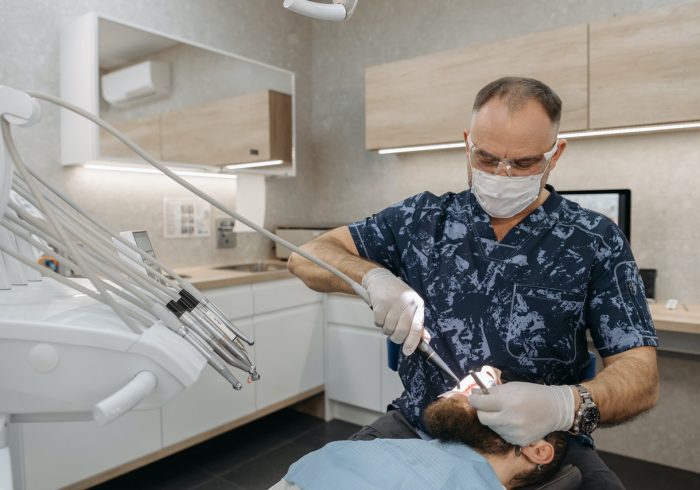When water damage strikes a commercial property, it can cause more than just a wet mess—it can disrupt business operations and lead to significant financial losses. Addressing the issue quickly is critical to mitigating the damage, ensuring the safety of staff and customers, and getting your business back on its feet. In this article, we will explore who to contact and what steps to take when faced with water damage in a commercial space.
Recognizing the Culprits Behind Water Damage
Water damage in commercial properties can sneak up unexpectedly or ravage forcefully, manifesting in ways that demand immediate attention. Left unaddressed, the consequences can be structurally and financially devastating. Knowing the common causes is essential to proactive prevention, prompt recognition, and efficient resolution. Below, we uncover the main culprits behind water damage in commercial settings:
- Plumbing Issues:
- Burst Pipes: Rapid temperature changes or physical damage can cause pipes to burst, unleashing water where it shouldn’t be.
- Leaky Faucets and Fixtures: These can create slow drips that accumulate over time, leading to significant damage, particularly if undetected.
- Blocked Drains: When water can’t escape through drains, it can back up and overflow, potentially flooding areas of the property.
- Weather-Related Water Damage:
- Heavy Rains: Torrential downpours can lead to penetrating dampness and flooding, especially if drainage is inadequate.
- Hurricanes and Storms: Strong winds paired with heavy rain can damage roofs, windows, and walls, allowing water to invade.
- Flash Floods: These rapid floods can overwhelm any building’s defenses in minutes, wreaking havoc with little to no warning.
- Leaks from HVAC Systems:
- Poorly Maintained Units: HVAC systems require regular maintenance. Without it, condensation and other issues can cause leaks.
- Overflowing Drip Pans: If not emptied, drip pans fill and overflow, potentially damaging the areas around the HVAC system.
- Broken or Clogged Lines: Condensate lines can leak or become blocked, leading to water issues that may go unnoticed within walls or ceilings.
- Human Errors:
- Unattended Running Water: A tap left open can cause overspill and damage, especially over weekends or holidays when no one is on the premises.
- Improperly Installed Appliances: Dishwashers, washing machines, and refrigerators need correct installation to prevent leaks.
- Structural Damage:
- Damaged Seals and Weatherstripping: Worn seals around windows and doors permit water entry, especially during storms.
- Foundation Cracks: Over time, a property’s foundation may develop cracks that allow groundwater to seep in.
- Malfunctioning Sprinkler Systems:
- Leaks and Sprays: Faulty sprinkler heads can leak or improperly activate, causing water damage indoors.
- System Freeze: In cold climates, sprinkler pipes can freeze and burst, much like plumbing lines.
- Equipment or Machinery Breakdown:
- Industrial Accidents: Equipment failures can result in water line breaks or sprinkler activations, resulting in widespread water discharge.
- Overflowing Basins or Tanks: Holding tanks, vessels, or large industrial sinks, when not monitored correctly, can overflow.
- Substandard Building Materials or Practices:
- Inferior Roofing Materials: Roofs that have been constructed with subpar materials may fail to safeguard against water ingress.
- Flawed Construction: Faulty design or artistry can lead to deficiencies that permit water entry points.
- Natural Disasters Beyond Weather:
- Earthquakes: Seismic activities can crack pipes, disrupt water lines, and cause structural damage that leads to leaks.
- Landslides: The movement of land can also damage utility lines, disrupting normal water flow and containment.
Essential First Steps Upon Discovering Water Damage
- Assess and Secure: Ensure the damaged area is safe to enter and turn off water sources and electricity, if necessary.
- Document the Damage: Take photographs and notes to detail the extent of the damage for insurance purposes.
Selecting a Professional for Water Damage Assessment
Once the immediate dangers are addressed, reaching out to professionals who can assess the water damage is your next move. A thorough assessment will lay the groundwork for a successful clean-up and restoration. Experts in this field will examine the property, determine the extent of the damage, and devise a plan to restore the commercial space to its pre-damaged state.
Commercial Property Management’s Role in Addressing Water Damage
Property managers play a pivotal role in handling crises such as water damage. Their responsibilities include:
- Acting as the primary contact for tenants and service providers
- Coordinating efforts between different parties to ensure a smooth recovery process
Choosing the Right Water Damage Restoration Company
Finding a reputable water damage restoration company is crucial. They provide a range of services, and here are some pointers to help you select the best one:
- Look for companies with proper certifications and positive client feedback.
- Compare the scope of services offered and ensure they include comprehensive solutions from initial clean-up to full restoration.
Understanding Water Damage Restoration Services
Restoration companies step in to return your property to its pre-loss condition. Their services involve:
- Emergency Water Extraction: Removing standing water is the first order of business.
- Dehumidification processes: These help prevent mold growth and additional property damage.
- Rebuilding and Renovation: They repair or replace damaged structures and fixtures.
PuroClean can help with property damage by providing all the necessary restoration and repair services to bring a commercial space back from the ravages of water damage. They stand out as an example of the type of expert assistance you’d want on speed dial for such situations.
Dealing with Insurance Companies Post-Water Damage
Navigating through insurance claims post-water damage can be daunting. Here are some insights to smoothen the process:
- Report the damage promptly to your insurance company and provide them with the necessary documentation of the damage.
- Understand the coverage you have and the type of water damage it entails, as some policies may have limitations.
How Commercial Property Insurance Helps
Good commercial property insurance is a lifeline in water-damage scenarios, covering:
- Costs for property repair and restoration
- Business interruption losses
Preventative Measures to Keep Water Damage at Bay
To mitigate risks of future water damages:
- Conduct regular maintenance of plumbing and HVAC systems
- Invest in water sensors to detect early signs of leakage
Enhancing Your Commercial Property to Withstand Water Damage
- Use Water-Resistant Materials: These can reduce the extent of damage if water intrusion occurs.
- Plumbing Upgrades: Modernizing pipes and fixtures can prevent leaks before they start.
- Exterior Maintenance: Addressing landscape drainage and ensuring the building’s envelope is watertight are essential strategies.
Understanding Legal Aspects of Water Damage Restoration
Commercial property owners must mandatorily adhere to local codes and regulations during restoration to avoid future liabilities. This means ensuring proper waste disposal and that restoration work aligns with environmental standards.
In the realm of Water Damage Restoration, companies like PuroClean water restoration specialists follow these regulations closely to provide services that not only restore properties but also comply with the required legal framework, safeguarding property owners against potential legal challenges.
Conclusion
No one wants to face water damage on their commercial property, but with a strategic response plan, you can dampen its impacts. Ensuring you have the right partners on board, maintaining your property, and being proactive rather than reactive is key. Remember, when water strikes, rapid, informed, and coordinated action is your best line of defense.




